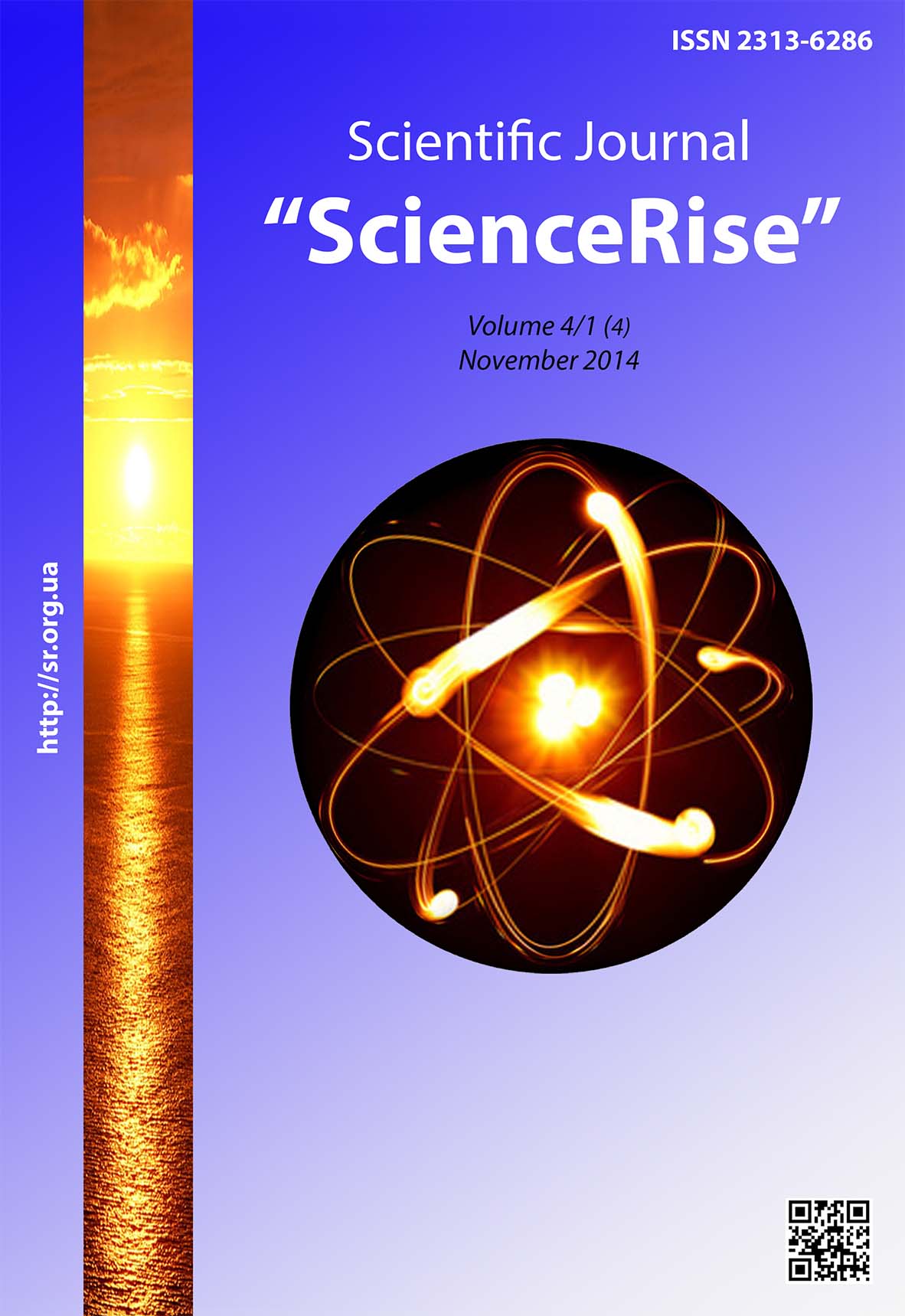Formation of motor skills and technical preparedness of young 11-14 years football players
DOI:
https://doi.org/10.15587/2313-8416.2014.28576Keywords:
football, formation, speed, strength, ability, development, training, students, classes, technical skillAbstract
The article shows the need for a qualitative change in the training process of young players through the development and use of special sets of exercises with technical devices. It allows to increase the level of speed and speed-strength abilities, to intensify the training process during the football classes. The positive impact of the developed system formation of motor skills and technical training of young 11-14 years football players is identified.
References
1. Shalenko, V. V. (2005). Formuvannya ruhovih yakostey ta tehnIchnoyi pidgotovlenosti shkolyariv protyagom bezperervnoyi futbolnoiyi pidgotovki. OlimpIyskiy i profesiyniy sport. HDAFK. Harkiv, 183.
2. Verhoshanskiy, Yu. V. (1988). Osnovyi spetsialnoy fizicheskoy podgotovki sportsmenov. Moskva. Fizkultura i sport, 331.
3. Vihrov, K. L. (2000). Fizicheskaya podgotovka yunyih futboli. Kiev, 44.
4. Shalenko, V. V. (2006). Dinamika formuvannya elementiv tehnichnoyi pidgotovlenosti v zalezhnosti vid rozvitku sili m'yazIv u yunih futbolistiv 11-14 rokIv [Elektronniy resurs]. PedagogIka, psihologIya ta med.-biol. probl. fiz. vihovannya i sportu, 2, 121–124.
5. Lisenchuk, G. A. (2003). Upravlenie podgotovkoy futbolistov. Kiev. Olimpiyskaya literatura, 272.
6. Platonov, V. N. (2004). Sistema podgotovki sportsmenov v olimpiyskom sporte. Obschaya teoriya i ii prakticheskie prilozheniya. Kiev. Olimpiyskaya literatura, 808.
7. Maksimenko, I. G. (2002). Osnovyi otbora, obucheniya i trenirovki futbolistov. Lugansk. Znanie, 424.
8. Maksimenko, I. G. (2009). Sorevnovatelnaya i trenirovochnaya deyatelnost futbolistov: monografiya. Lugansk. Znanie, 258.
9. VIhrov, K. L. (2002). Futbol u shkoli: Navchalno-metodichniy posibnik. Kiyiv. Kombi LTD, 256.
10. Vaskov, Yu. V. (2004). Uroki fizikulturi v zagolnoosvitniy shkoli. 5-9 klasi (102 uroki dlya kozhnogo klasu). Harkiv. Torsing, 288.
11. VIhrov, K. (2002). Vprovadzhennya uroku fizichnoyi kulturi z elementami futbolu v shkolah Ukrayini. Fizichne vihovannya v shkoli, 1, 2–3.
12. Danchuk, P. (2004). Futbol yak zasib pidvischennya obsyagu ruhlivoyi aktivnosti i fizichnoyi pidgotovlenosti hloptsiv 12–14 rokiv, yaki prozhivayut v zonI pIdvischenoyi radIatsiyi. MaterIali naukovoyi konferentsiyi, prisvyachenoyi 110-richchu ukrayinskomu futbolu «Futbol v Ukrayini – vitoki, traditsiyi, perspektivi». Lviv-Kiyiv, 251.
13. Galyuza, S. S. (2012). Teoretiko-metodichnI osoblivostI provedennya zanyat futbolom zi studentkami universitetiv. Pedagogika, psihologiya ta mediko-biologichni problemi fizichnogo vihovannya i sportu, 9, 78.
14. Maksimenko, I. G. (1998). Kontrol za urovnem razvitiya byistrotyi i skorostno-silovyih kachestv u futbolistov razlichnoy kvalifikatsii. Pedagogika, psihologIya ta mediko-biologichni problemi fizichnogo vihovannya i sportu, 3, 23–24.
15. Maksimenko, I. G. (2007). Mini-futbol: doslidzhennya pokaznikiv strukturi fizichnoyi pidgotovlenosti 11–14-richnih gravtsiv. Pedagogika, psihologiya ta mediko-biologichni problemi fizichnogo vihovannya i sportu, 8, 85–88.
16. Calvin, Y. (2007). Entraineur de football: la technique, corriger pour progresser. Paris : Editions Actio, 194.
Downloads
Published
Issue
Section
License
Copyright (c) 2014 Артем Васильович Бойченко

This work is licensed under a Creative Commons Attribution 4.0 International License.
Our journal abides by the Creative Commons CC BY copyright rights and permissions for open access journals.
Authors, who are published in this journal, agree to the following conditions:
1. The authors reserve the right to authorship of the work and pass the first publication right of this work to the journal under the terms of a Creative Commons CC BY, which allows others to freely distribute the published research with the obligatory reference to the authors of the original work and the first publication of the work in this journal.
2. The authors have the right to conclude separate supplement agreements that relate to non-exclusive work distribution in the form in which it has been published by the journal (for example, to upload the work to the online storage of the journal or publish it as part of a monograph), provided that the reference to the first publication of the work in this journal is included.

